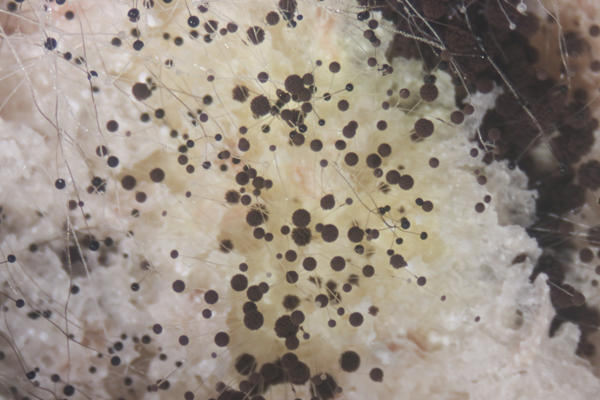Spoilers

Microbes like all living organisms need food for energy and growth.
Mouldy fruit
A mould is a type of fungus. Fungal spores (these are like the seeds of a plant) are all around us in the air. These spores can land on the fruit. If it is warm and moist the fungal spores grow. They send out very fine thread-like structures called hyphae. The moulds that grow on fruit and vegetables produce enzymes that weaken the protective outer skin allowing penetration by the hyphae. The hyphae grow down into the fruit, digest it and absorb the nutrients. These threads criss-cross each other to form a large tangled structure known as a mycelium. The hyphae produce stalks that grow upwards. Spores form at the end of the stalks and are released into the air to start the process over again. Eventually the fruit becomes covered in a furry coat and is not fit to eat.
Food preservation
Food preservation reduces the rate at which food decays by slowing down the rate of growth of microbes or eliminating them. It can affect the flavour and texture of the food. Preservation techniques include: refrigeration, freezing, drying sterilisation and pasteurisation.
-
Food poisoning
There are probably at least a million cases of microbial food poisoning in the UK every year costing an estimated £1.5 billion a year – how can anything as small as a microbe cause all this trouble?
-
Producers
Microbes ferment sugar to make energy for themselves – luckily for us food like bread and yoghurt can be made by microbial fermentations.




